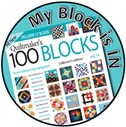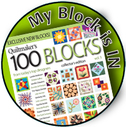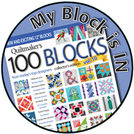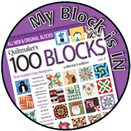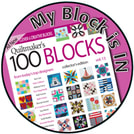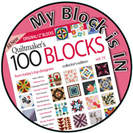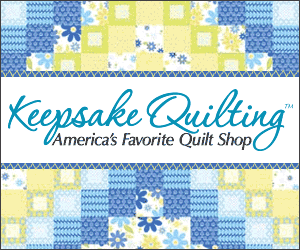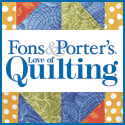N.Q.M. B.O.M. ROUND 3 - BLOCK 3
Before we get sewing, we have to pick out fabrics. I decided to continue using the blue fabric that I've used in the previous two blocks. I added in one of the coordinates from the collection that I had also used in the previous blocks. I added another print from that collection that I had not used yet. to create unity. I decided that since the blue fabric was a medium value I would make the background a light value. These are my fabric choices.
My next decision was to increase the width of all of the 1" wide strips to 1 1/8". This is a trick I learned from making many Seminole strip quilts. For any strip that is 1" or narrower, it is best to cut the strip 1/8" wider than needed. The idea is that after you sew the strip on one side, the remaining raw edge could be a little bit off from human error. This small amount of human error is not noticeable on wider strips but it can become obvious on narrower strips. If you trim the raw edge to the finished with plus a quarter inch seam, you will only have that human error variable on one side of the strip.
For example, on our project we are working with a half inch finished strip down the center of the unit so therefore once one side has been stitched down the visible amount of strip will be 3/4" wide when trimmed. Here's a picture to demonstrate.
Here's a little tip I will give you about working with freezer paper, take a sticky lint brush to your ironing board cover to remove any lint before proceeding. Also when you touch the iron to the freezer paper, try to only heat up the parts that are attaching to your fabric units. I have had experiences in the past where the wax picked up so much lint from my ironing board that it didn't want to stick to the fabric piece that it should stick to.
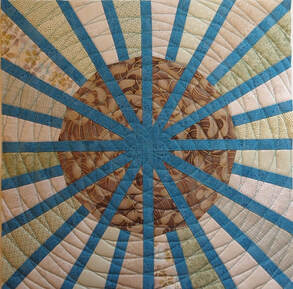
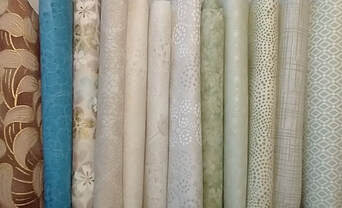
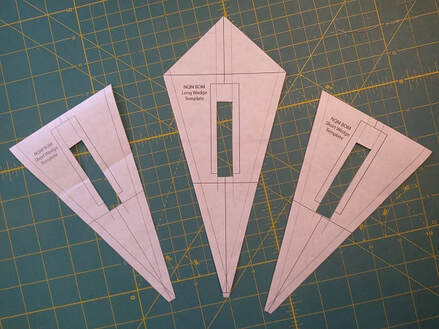
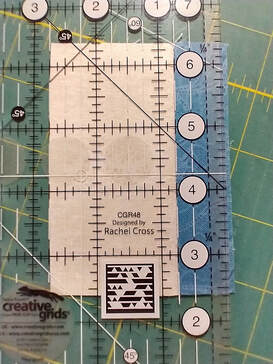
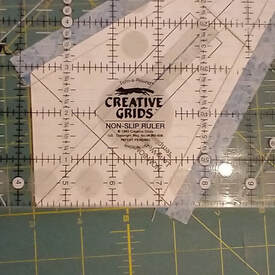
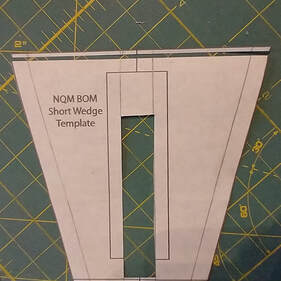
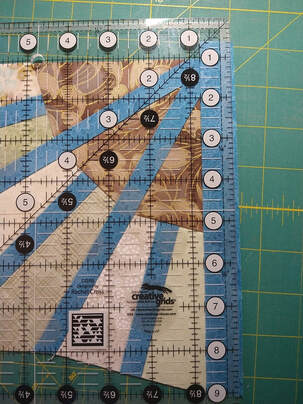
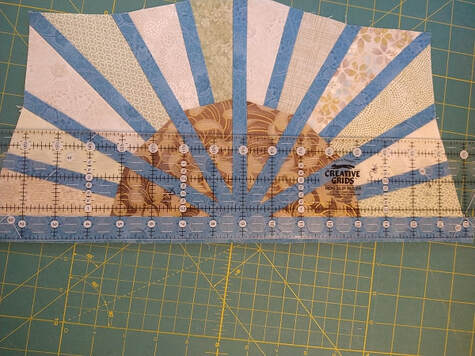
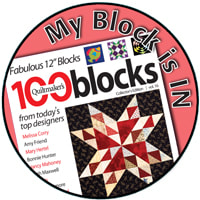

 RSS Feed
RSS Feed

